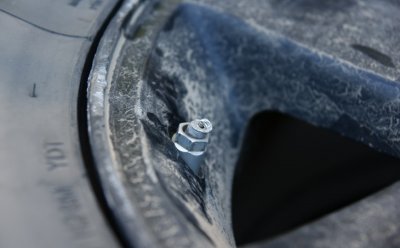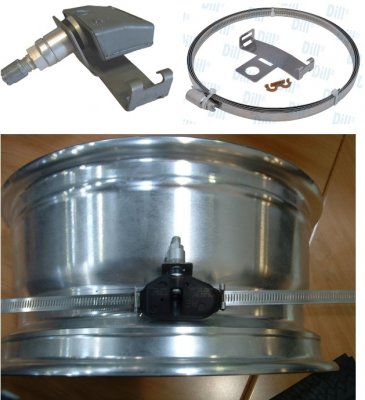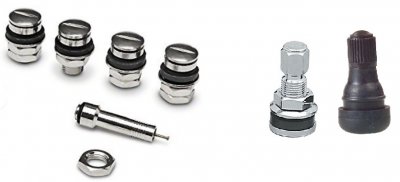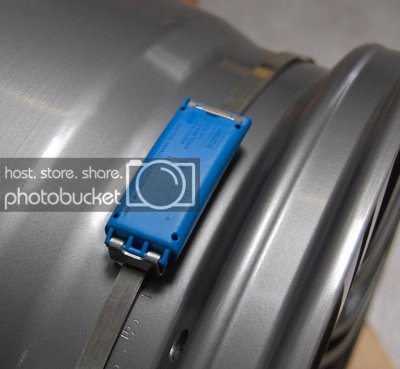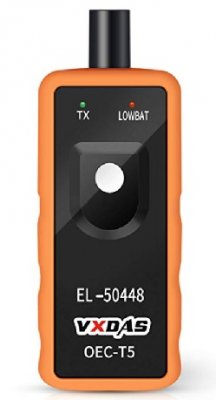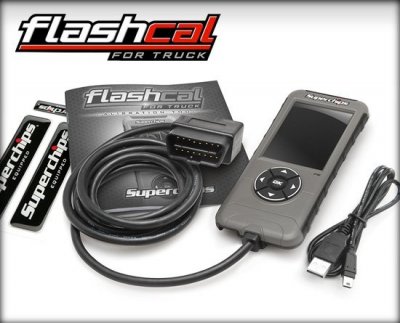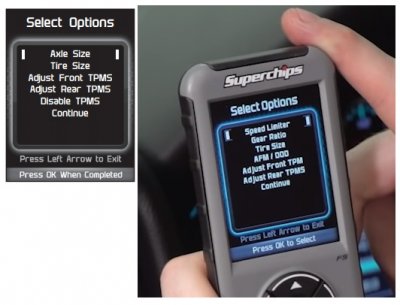Jolly Roger
Full Access Member
- Joined
- Nov 2, 2018
- Posts
- 397
- Reaction score
- 462
I hate TPMS.
I like the idea of it and in a perfect world they would work all the time reliably and dependably. But they dont, at least not in my experience. My objectivity is mostly due to the performance of them (or lack there of) because of where I live (Alaska).
Its not out of the ordinary for the temperatures to drop to -30 below zero in the winter and push 120 in the sun during the summer. With Alaska's extreme climates, road conditions and the yearly studded tire change-over, many Alaskans are very accustom to TPMS warning lights, bells and whistles.
TPM sensors retire early, and rarely work. The additives and salts corrode the most common aluminum TPMS valve stems in a mater of one season. Batteries dont last long at all in severe cold and the added complexity of having an extra set of snow tires w/tpms being constantly changed over each year,
being programmed/paired each time introduces more errors and failures.
The average price for installing TPM sensors in a new set of snow tires costs $300-$500 on top of the price of tires, mount and balance. The mass census here is that most refuse TPMS because of there expense and that they simply "never work anyway"..
Unfortunately this leaves many in a bind because most tire shops will not install the tires on your vehicle because of the liability.
The result of this is many unsafe vehicles on the road because they either couldn't afford snow-tires
(now driving bald summer tires on ice) or were forced to tote there "un-sensored" tires home and install them themselves with a pair of Vise-Grips.
Im "tire"ed of it!
Between my Tahoe, my wife's car and my son's vehicle's TPMS problems are a constant PIMA.
I cant count the amount of times my friends and family have been stranded with a flat tires due to TPMS valves. The valves are usually longer than traditional valve stems and when driving through ice, deep snow or remote areas with badly grooved/rutted dirt roads the valves are exercised letting the air
out (think of Cheese in a can dispenser) or the valve sheers off altogether. They do offer shorter valve replacements for the TPMS but most do not know this and by the time they do, they found out the hard way.
Keeping on top of everyone's TPMS warning lights has become a major chore, especially in the winter where temperatures fluctuate so much. I've bought the programmers in a futile attempt not to have to pay a shops $$$ to reprogram my sensors over and over again, but waking a TPMS or
relearning tire positions doesn't work when the sensor is dead! And this is far to often the case.
TPMS Delete journey
I was first made aware of the PVC tube trick back in 2007-8. I was talking to my buddy who is a Costco tire shop manager. He said he had seen the trick preformed on multiple occasions with different success. It worked in some vehicles but not in others. One of the shop guys tried it for his own ride but it didn't work. He said that his light would come on in a matter of days unless he shook his tube every once in a while. So it was evident that the TPMS not only entered a sleep mode to conserve battery life, but was turned back on with motion.
Having access to many discarded sensors he tried out a few different brands until a set worked all the time regardless of motion. This confirms why this trick is sometimes successful and sometimes not. Some sensors sleep and some do not. The question is which ones do and dont, and are they still made?
The other valuable bit of information during the trials were that he had made several different tubes. He was able to make the tube smaller by taking off the valve stems before fitting them into the tube. This lead to the conclusion that some (not all) sensors used the valve stem as an antenna to transmit the signal. Some sensors have internal antennas and the ones that dont use a screw to attach the valve stem that electrically makes contact with the PC board inside the sensor.
Some have had success in using ONE internal type antenna sensor with removed valve-stem put inside a tube the size of a film canister! This worked because the ECM didnt require different 32 bit identifiers or ASK/FSK packets/signals from four different sensors. During programming, the same sensor was accepted for each tire. Will this still work with newer vehicles?
TPMS Emulators "Fake-Out Boxes"..
These are electronic gizmos that transmit/emulate the signals that the TPM sensors normally do. In theory, they allow you to completely remove your sensors.
Depending on the make of the vehicle, the box puts out four individual 315MHz or 433MHz signals every 30-90 seconds with four different identifying serial numbers along with temperature info ect. Basically telling the ECM what it wants to "hear" from a normally functioning sensor(s). Your tire information display will say 32psi on all four corners because thats what its been tricked into saying.
Its very similar to the PVC trick but is usually the size of a pack of cards. Depending on the manufacturer Its either powered by AA batteries and is switched on, or uses the vehicles power and switched on with vehicle start-up. During the writing of this, only two manufactures still exists to my knowledge and are located in the UK and Canada probably due to some Federal law here in the US?
These products have mixed reviews, only available for some vehicle makes/models and cost $60-$100.
Make your own Spoofer?
I haven't the skill set to make one from scratch but I've heard of it being done. But how hard would it be to take four sensors (matching MHz) remove the batteries and attach batt leads to all of them with a in-line resistor to match input voltage. Remove the barometric sensor from the board and add a potentiometer to adjust PSI. If the sensor is motion activated, just short out the motion/reeve switch. Internal antenna type sensors would work best and by being able to remove the valve stems you could fit the whole thing in a very small project box.
Connect it to key on power and it would transmit while driving and never need batteries.
Sounds like allot of work, but reading some of the reviews about dependability of the Emulators, it may be worth a try. Besides, you wouldn't need new sensors, you could get them from your local tire shop trash can!
Other methods...
The black tape method..Ummm NO.
The BCM approach..
Some say it can be done, some have tried and bricked there truck or car. Its rumored that 2015 BCM's are encrypted and impossible to program out or wire out the TP system.
There is a Toyota forum where someone was able to achieve a BCM delete..
Tuners..
Most tuner manufactures wont advertise the ability of TPMS delete, at least I haven't found any. The closest implication I have found on a tuner lists that it has "TPMS Options"
Like I mentioned earlier, I truly think the Emulator devices are located in other counties for a reason.
Getting a reputation as a "TPMS delete tool" would probably get you fined, shut down or held liable for injury.
By accident method..
By far one of the most interesting categories! I feel this is and will be the best loop hole to come. Some have replaced a door switch, pulled out fuses or sneezed on the BCM while "Another one bites the dust" played via USB input...all somehow permanently disabling the TPM system.
If you have any other Ideas or know of other TPMS delete/modification information please add it!
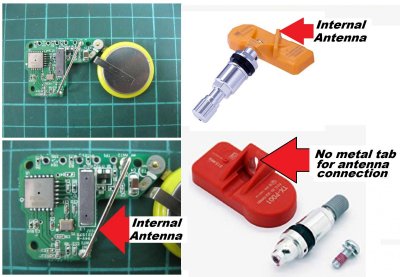
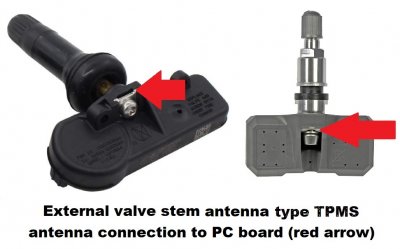
I like the idea of it and in a perfect world they would work all the time reliably and dependably. But they dont, at least not in my experience. My objectivity is mostly due to the performance of them (or lack there of) because of where I live (Alaska).
Its not out of the ordinary for the temperatures to drop to -30 below zero in the winter and push 120 in the sun during the summer. With Alaska's extreme climates, road conditions and the yearly studded tire change-over, many Alaskans are very accustom to TPMS warning lights, bells and whistles.
TPM sensors retire early, and rarely work. The additives and salts corrode the most common aluminum TPMS valve stems in a mater of one season. Batteries dont last long at all in severe cold and the added complexity of having an extra set of snow tires w/tpms being constantly changed over each year,
being programmed/paired each time introduces more errors and failures.
The average price for installing TPM sensors in a new set of snow tires costs $300-$500 on top of the price of tires, mount and balance. The mass census here is that most refuse TPMS because of there expense and that they simply "never work anyway"..
Unfortunately this leaves many in a bind because most tire shops will not install the tires on your vehicle because of the liability.
The result of this is many unsafe vehicles on the road because they either couldn't afford snow-tires
(now driving bald summer tires on ice) or were forced to tote there "un-sensored" tires home and install them themselves with a pair of Vise-Grips.
Im "tire"ed of it!
Between my Tahoe, my wife's car and my son's vehicle's TPMS problems are a constant PIMA.
I cant count the amount of times my friends and family have been stranded with a flat tires due to TPMS valves. The valves are usually longer than traditional valve stems and when driving through ice, deep snow or remote areas with badly grooved/rutted dirt roads the valves are exercised letting the air
out (think of Cheese in a can dispenser) or the valve sheers off altogether. They do offer shorter valve replacements for the TPMS but most do not know this and by the time they do, they found out the hard way.
Keeping on top of everyone's TPMS warning lights has become a major chore, especially in the winter where temperatures fluctuate so much. I've bought the programmers in a futile attempt not to have to pay a shops $$$ to reprogram my sensors over and over again, but waking a TPMS or
relearning tire positions doesn't work when the sensor is dead! And this is far to often the case.
TPMS Delete journey
I was first made aware of the PVC tube trick back in 2007-8. I was talking to my buddy who is a Costco tire shop manager. He said he had seen the trick preformed on multiple occasions with different success. It worked in some vehicles but not in others. One of the shop guys tried it for his own ride but it didn't work. He said that his light would come on in a matter of days unless he shook his tube every once in a while. So it was evident that the TPMS not only entered a sleep mode to conserve battery life, but was turned back on with motion.
Having access to many discarded sensors he tried out a few different brands until a set worked all the time regardless of motion. This confirms why this trick is sometimes successful and sometimes not. Some sensors sleep and some do not. The question is which ones do and dont, and are they still made?
The other valuable bit of information during the trials were that he had made several different tubes. He was able to make the tube smaller by taking off the valve stems before fitting them into the tube. This lead to the conclusion that some (not all) sensors used the valve stem as an antenna to transmit the signal. Some sensors have internal antennas and the ones that dont use a screw to attach the valve stem that electrically makes contact with the PC board inside the sensor.
Some have had success in using ONE internal type antenna sensor with removed valve-stem put inside a tube the size of a film canister! This worked because the ECM didnt require different 32 bit identifiers or ASK/FSK packets/signals from four different sensors. During programming, the same sensor was accepted for each tire. Will this still work with newer vehicles?
TPMS Emulators "Fake-Out Boxes"..
These are electronic gizmos that transmit/emulate the signals that the TPM sensors normally do. In theory, they allow you to completely remove your sensors.
Depending on the make of the vehicle, the box puts out four individual 315MHz or 433MHz signals every 30-90 seconds with four different identifying serial numbers along with temperature info ect. Basically telling the ECM what it wants to "hear" from a normally functioning sensor(s). Your tire information display will say 32psi on all four corners because thats what its been tricked into saying.
Its very similar to the PVC trick but is usually the size of a pack of cards. Depending on the manufacturer Its either powered by AA batteries and is switched on, or uses the vehicles power and switched on with vehicle start-up. During the writing of this, only two manufactures still exists to my knowledge and are located in the UK and Canada probably due to some Federal law here in the US?
These products have mixed reviews, only available for some vehicle makes/models and cost $60-$100.
Make your own Spoofer?
I haven't the skill set to make one from scratch but I've heard of it being done. But how hard would it be to take four sensors (matching MHz) remove the batteries and attach batt leads to all of them with a in-line resistor to match input voltage. Remove the barometric sensor from the board and add a potentiometer to adjust PSI. If the sensor is motion activated, just short out the motion/reeve switch. Internal antenna type sensors would work best and by being able to remove the valve stems you could fit the whole thing in a very small project box.
Connect it to key on power and it would transmit while driving and never need batteries.
Sounds like allot of work, but reading some of the reviews about dependability of the Emulators, it may be worth a try. Besides, you wouldn't need new sensors, you could get them from your local tire shop trash can!
Other methods...
The black tape method..Ummm NO.
The BCM approach..
Some say it can be done, some have tried and bricked there truck or car. Its rumored that 2015 BCM's are encrypted and impossible to program out or wire out the TP system.
There is a Toyota forum where someone was able to achieve a BCM delete..
Tuners..
Most tuner manufactures wont advertise the ability of TPMS delete, at least I haven't found any. The closest implication I have found on a tuner lists that it has "TPMS Options"
Like I mentioned earlier, I truly think the Emulator devices are located in other counties for a reason.
Getting a reputation as a "TPMS delete tool" would probably get you fined, shut down or held liable for injury.
By accident method..
By far one of the most interesting categories! I feel this is and will be the best loop hole to come. Some have replaced a door switch, pulled out fuses or sneezed on the BCM while "Another one bites the dust" played via USB input...all somehow permanently disabling the TPM system.
If you have any other Ideas or know of other TPMS delete/modification information please add it!


Last edited:


